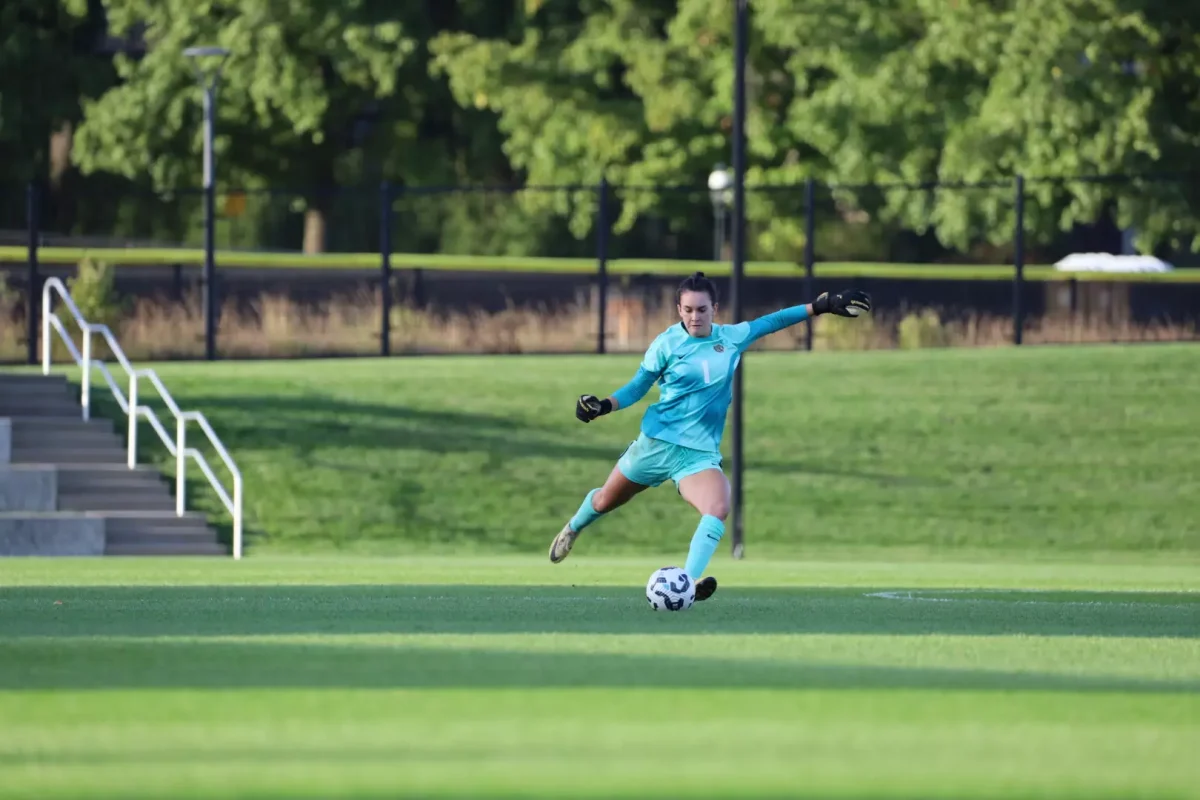I never really got Shakespeare.
After years of reading his work throughout middle school, high school and college, it just never really clicked. There was no reason for me to see Broadway’s newest Shakespeare production, “Romeo + Juliet,” but Rachel Zegler and Kit Connor as the titular doomed couple was not a billing I could pass up.
Using the tag lines “The youth are f**ked” and “The world is not thy friend,” this production provides a modern spin on the classic tale while sticking with Shakespeare’s original words. My favorite manifestation of this was the different enunciation of words like “girl,” which has taken on a whole new meaning since Shakespeare’s time.
While the story is famously about a 13 and 14-year-old, this production is clearly speaking to an older crowd. From Romeo washing down his poison with a BORG to Paris blowing smoke from his vape into the friar’s face, the show aspires to commentate on early-20s America — burden-filled but carefree in nature. While overt, the inclusion of college paraphilia did not come across as cringe-worthy as one might imagine.
The show was distinctly aware that it was a performance, starting with an excited introduction to the cast and their characters at the play’s beginning. This awareness allowed for the story to speak more directly to a modern audience, acutely aware that the words they were hearing were from the 1500s. Many of the supporting cast played multiple roles in an obvious way (“I’m the Friar now!”) and deliberate pauses in action (including an audience performance of FUN’s “We Are Young”), which made for some humorous and fresh content.
Zegler as Juliet was incredible casting. The tragic love story is no stranger to Zegler, who played Juliet-inspired Maria in Steven Spielberg’s “West Side Story” (2021). Her version of Juliet in this performance was charming and playful, and her final monologues of the show are so incredibly devastating.
Coinciding with the release of another successful season of Netflix’s “Heartstopper,” Connor was a perfect Romeo – passionate, brooding and a bit erratic. Connor commanded the audience’s attention every time he was in view.
Zegler and Connor’s chemistry is palpable. Both seem so lovestruck with each other that it is difficult not to be drawn to them. And, in the most shocking turn of events for me, the show was funny! I laughed — a lot. Despite the show still being in previews, I felt Zegler and Connor had near-perfect comedic timing.
The rest of the cast was exceptional. I felt that Sola Fadiran (who played both Capulet and Lady Capulet), Gían Pérez (who played Paris, Samson and Peter) and Gabby Beans (who played Mercutio and the Friar) were particular standouts.
It would have been a crime to have Zegler make her Broadway debut and not have her sing. “Man of the House” — an original written by Jack Antonoff (who created the play’s score) and Ryan Beatty, performed by a phantom Juliet to recently exiled Romeo — was completely suited for Zegler’s wide-vocal range and provided a nice break in action during a tense part of the play.
Playing at The Circle in the Square, “Romeo + Juliet” made full use of the 360-degree auditorium, allowing for every seat in the house to feel intimate. The stage went beyond the circular platform in the middle of the room. The theater lent itself to an immersive experience, bringing the characters into the aisle and in elevated catwalks above the room. I appreciated that the production did not use all of the technological capabilities of the space in the first act, leaving some surprising and interesting uses for the second half of the show.
I could write about the shocking amount of shameless filming and talking during the show, but I would rather end on a happy note (something that “Romeo + Juliet” does not do). “Romeo + Juliet” was unexpectedly funny, heartfelt and simply a really cool show to experience.
“Romeo + Juliet” runs through February and I highly, highly recommend trying to see this production before it’s through, especially if you are a fan of Zegler or Connor. I hope to get the chance to see it again as “parting is such sweet sorrow that I shall say goodnight till it be morrow.”























































































































